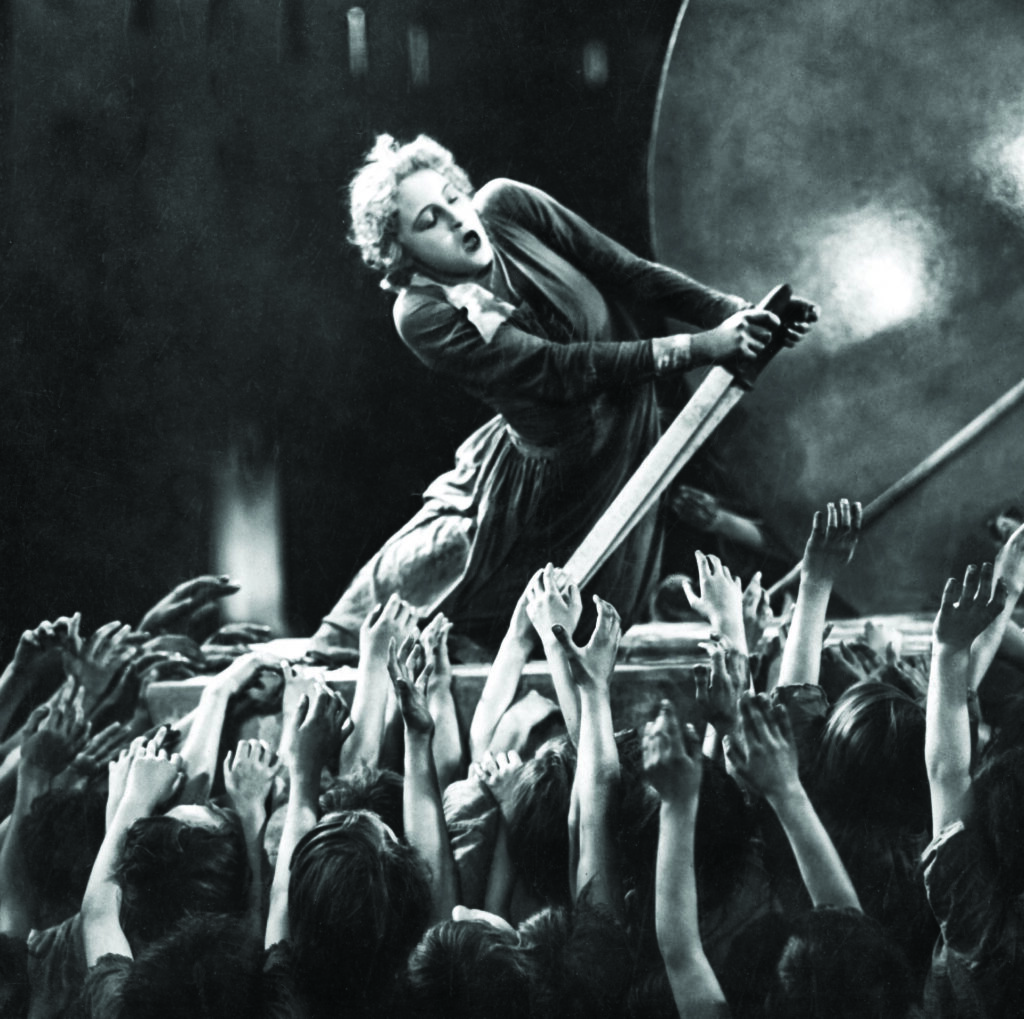
Metropolis, the 1927 film by Fritz Lang, stages a futuristic city in a socio-political allegory
Set in 2026, Metropolis is a futuristic city divided into two layers, two radically different worlds: an exploited working class, living underground, runs the mechanisms necessary to the life of the elite of city planners, a master race dwelling in the Utopian world above ground.
When the son of the city’s master falls in love with a girl, who is the prophet of the working class, things begin to change: she predicts the coming of a saviour to mediate their differences but is turned into a robot by the mad scientist, eccentric in physical appearance, called Rotwang. The robot tells the workers they must destroy everything and the revolution starts: violence is used by both sides, the elite and workers, but a compromise will be necessary in the end.
The cityscape is the mirror of a real metropolis like New York at the beginning of the 20th century, a cold, alienating, dehumanising place filled with skyscrapers, where flying machines and moving vehicles anticipate sci-fi movies like Blade Runner and The Fifth Element. For this reason Metropolis is considered a Sci-Fi film. It is also deeply indebted to early 20th century art movements such as Bauhaus, Cubism and Futurism. Metropolis is definitely like a gigantic 21st-century city state, both a utopia for the elite living in the urban spaces, and a dystopia for the underground workers. Also Charlie Chaplin will adopt the same vision of workers’ exploitation and alienation in ‘Modern Times’ a few years later, in 1936.
The idea of race selection made the film popular with Hitler and Goebbels who offered the honorary German citizenship to the half-Jewish director. He declined the offer and immediately left Germany. His wife instead, who had written the science fiction novel adapted into the movie, chose to stay in Germany and work for the Nazi party.
